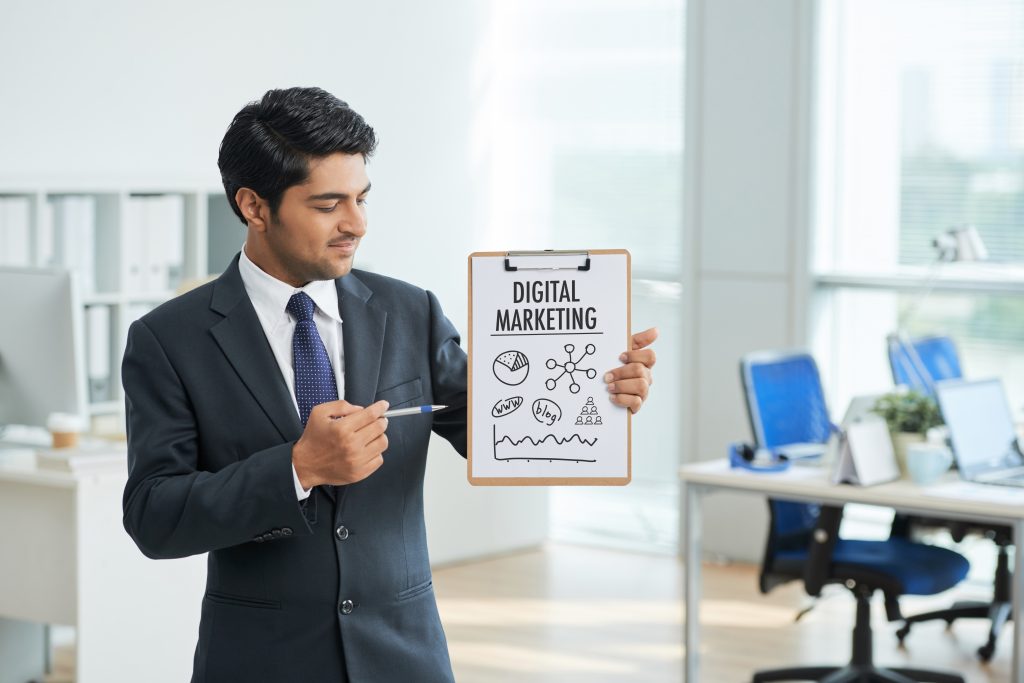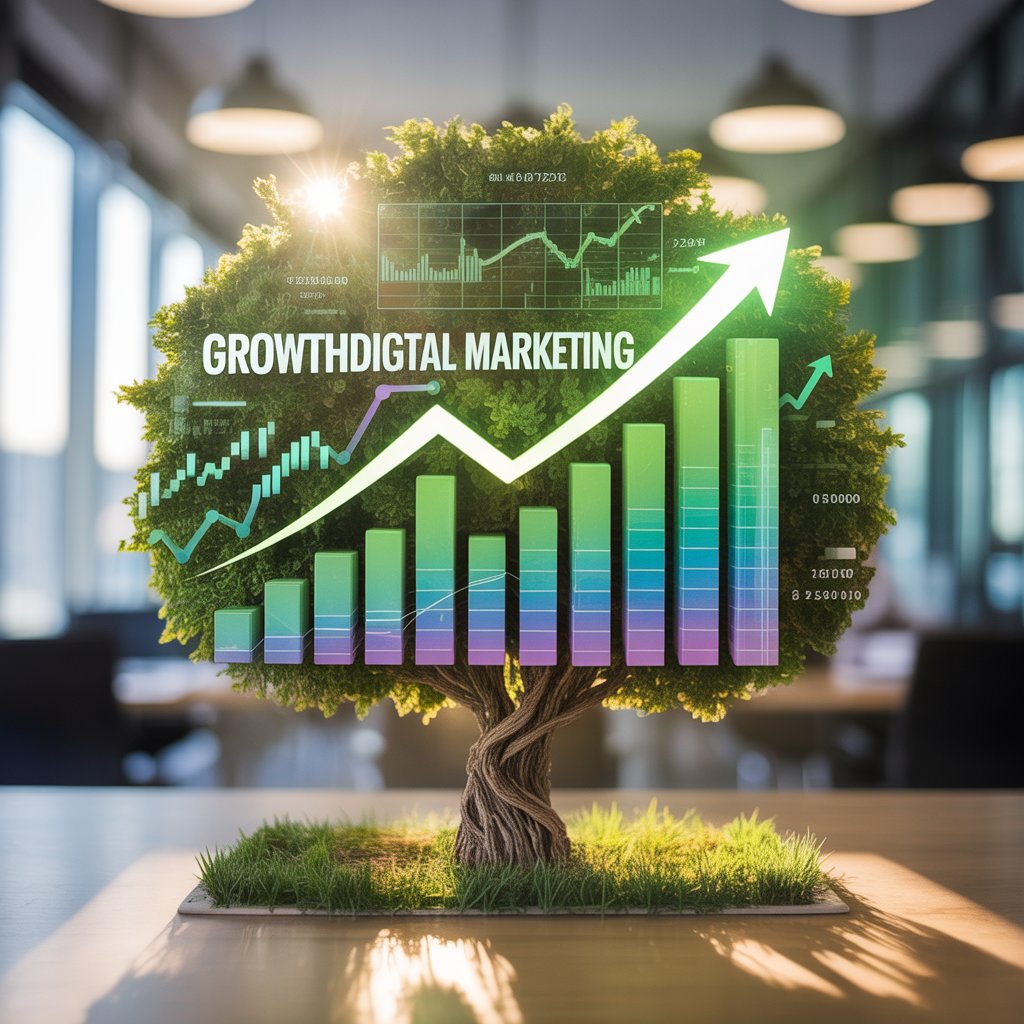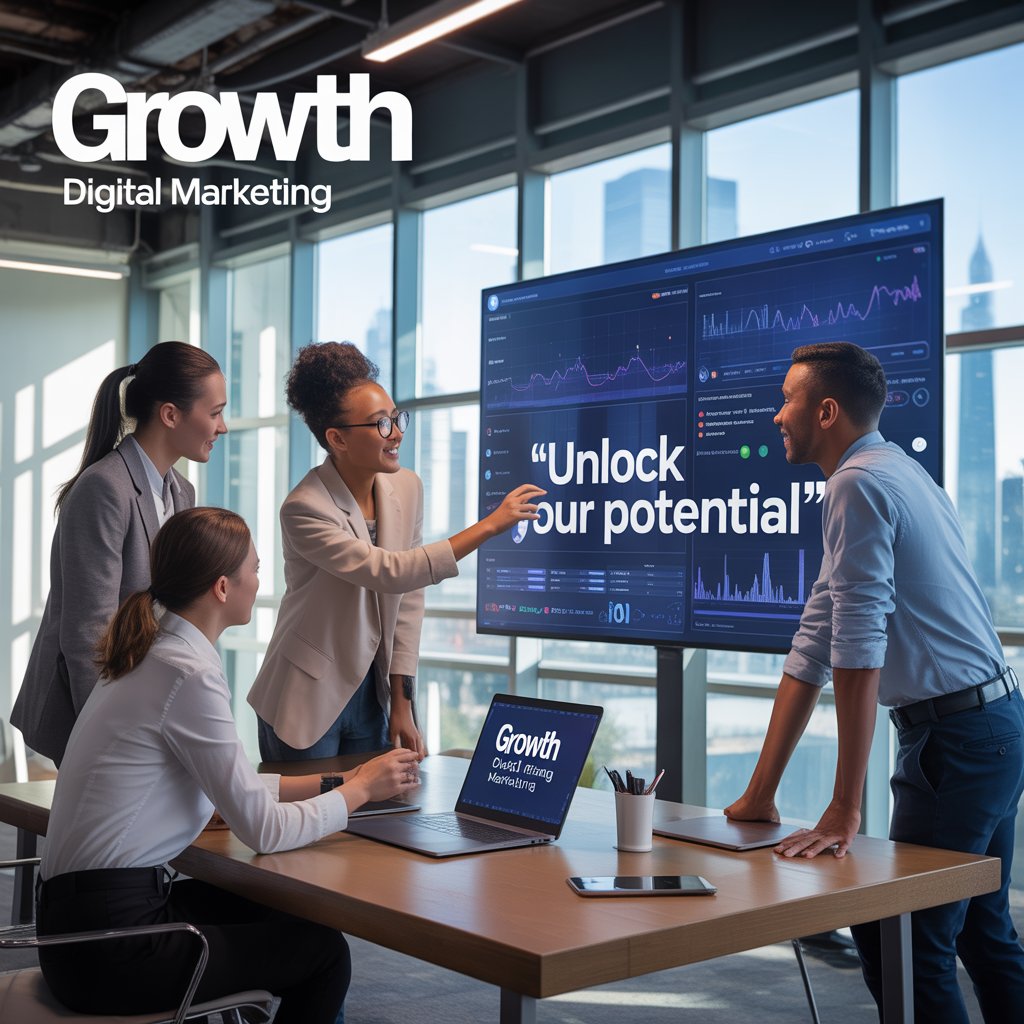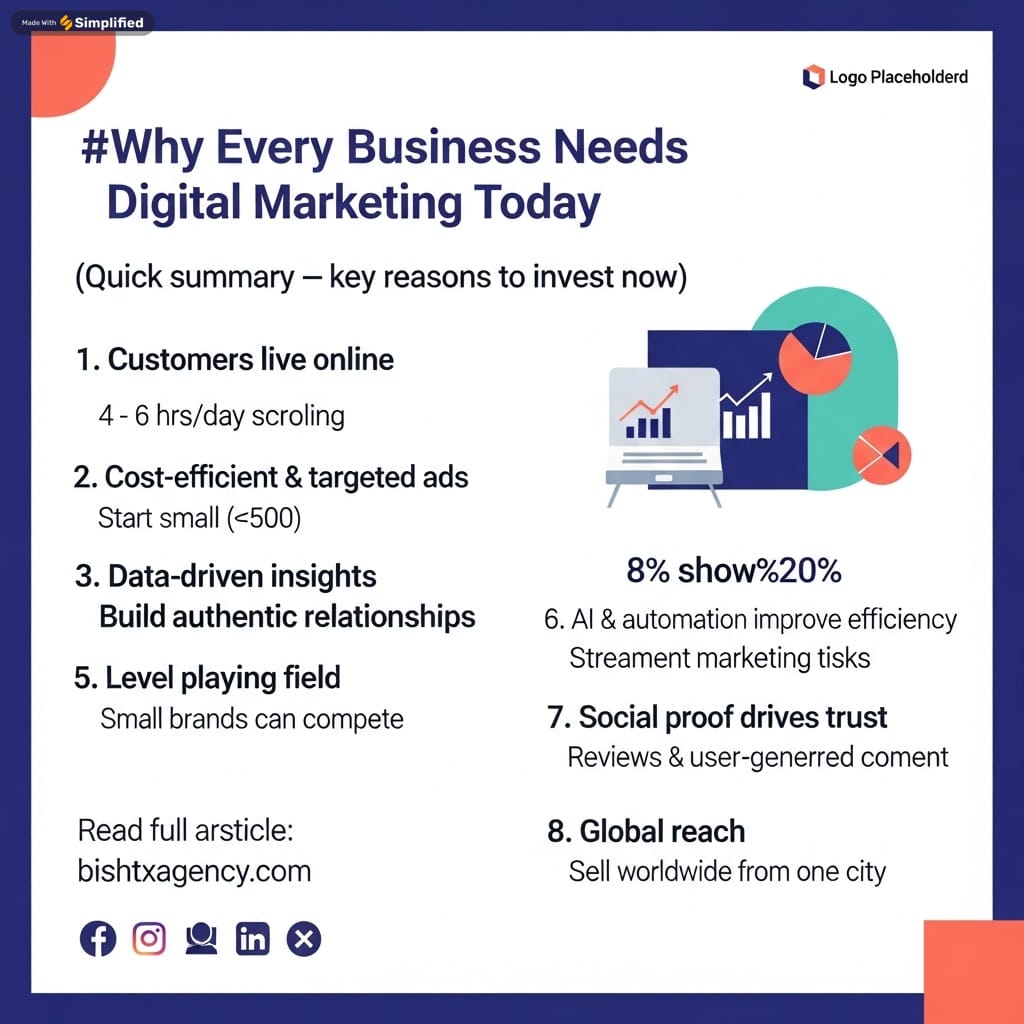
Introduction: The Digital-First World
The business landscape has transformed dramatically in the last decade. Today’s customers research products on Google, watch brand stories on Instagram, and make purchases directly through social media platforms. Whether you’re running a neighborhood bakery or a SaaS startup, digital marketing is now the bridge between your brand and your audience. Without it, even the best products risk staying invisible.
1. Customers Live Online—and Their Habits Are Changing
Modern consumers spend 4–6 hours a day online, often across multiple devices. They:
- Discover new brands on Instagram or YouTube.
- Check reviews and testimonials before purchasing.
- Expect quick replies through platforms like WhatsApp or Facebook Messenger.
Example: A local boutique in Delhi started sharing outfit styling reels on Instagram. Within three months, they attracted buyers from other states—something impossible with a physical store alone.
2. Digital Marketing Saves Costs While Expanding Reach
Traditional advertising like TV or newspapers requires huge budgets with limited targeting. Digital marketing flips the script:
- Flexible Budgets: You can start ads with as little as ₹500.
- Better Targeting: Ads can be shown only to specific locations, age groups, or interests.
- Organic Growth: Platforms like LinkedIn or Pinterest can drive free traffic through quality content.

3. Data-Driven Insights = Smarter Decisions
Unlike old-school ads, digital tools give you real-time data:
- Google Analytics shows which channels bring the most visitors.
- Facebook Ads Manager reveals which creatives perform best.
- Email Marketing Tools track open rates and conversions.
This makes it easier to double down on strategies that work instead of wasting money blindly.
4. Building Authentic Customer Relationships
Today’s audience values connection. Through social media comments, polls, or live videos, startups can engage customers directly. This builds brand loyalty faster than impersonal billboards ever could.

5. A Level Playing Field for Small Businesses
Digital marketing allows smaller brands to compete with industry giants. A clever video, meme campaign, or influencer partnership can go viral overnight, giving startups visibility they could never afford through traditional channels.
6. The Rise of AI, Automation, and Personalization
The latest digital tools let even small teams:
- Automate email sequences to save time.
- Use AI-powered chatbots for instant customer service.
- Personalize website content for different visitor groups.
These innovations not only save resources but also make businesses appear more professional and customer-focused.

7. Social Proof and Online Reputation Drive Trust
Customer reviews, testimonials, and user-generated content shape buying decisions. A single 5-star review on Google or a creative TikTok unboxing video can convince dozens of new customers. Digital marketing strategies help manage and amplify these signals of trust.
8. Going Global Without Leaving Your City
Startups can now reach customers across countries without opening physical stores. For example:
- An artisan from Jaipur can sell crafts worldwide through Instagram Shops.
- A SaaS startup in Bangalore can market its app to U.S. businesses using LinkedIn Ads.

9. Preparing for the Future of Commerce
Voice searches, AR filters, and social commerce are shaping the future. Companies already invested in digital marketing can pivot quickly when new trends emerge, giving them a significant edge.
Conclusion: Digital Marketing as the Growth Engine
Digital marketing isn’t just a tool—it’s the foundation for survival and growth in today’s fast-paced marketplace. For startups, it offers a cost-effective way to compete, connect, and scale. For established businesses, it’s the key to staying relevant as customer habits evolve.
If you’re launching a business today, embracing digital marketing isn’t an option—it’s the smartest investment you can make.

